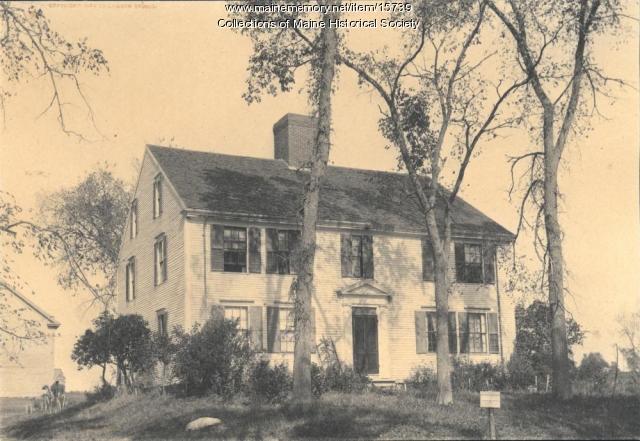Keywords: country town
Item 55205
Cross country skiing, Fairfield, ca. 1950
Contributed by: L.C. Bates Museum / Good Will-Hinckley Homes Date: circa 1950 Location: Fairfield Media: Photographic print
Item 26988
Contributed by: Islesboro Historical Society Date: 1933 Location: Islesboro Media: Photographic print
Exhibit
Music in Maine - Country Music
"… Music By Ken Brooks Choosing a Career in Country and Bluegrass Music Click to read entire story I grew up in the small town of Robbinston in…"
Exhibit
Music in Maine - Radio Cowboys and Country Music
"… Pea Cove near Old Town, Harold Breau’s career in country music as “Hal Lone Pine” took off when he met his future spouse and Franco singer Rita…"
Site Page
Thomaston: The Town that Went to Sea - 1850 to 1870
"… known as two of only seven millionaires in the country. Dry goods stores and specialty shops were in great number and merchants did a brisk…"
Site Page
Thomaston: The Town that Went to Sea - Henry Knox
"The country was delightful and verdant as imagination can picture... Henry Knox's Wastebook, ca."
Story
Choosing a Career in Country and Bluegrass Music
by Ken Brooks
How I became a country and bluegrass musician
Story
Jim Paquette - preserving his Franco-American and musical roots
by Biddeford Cultural & Heritage Center
Lead singer of the iconic Black Hart Band shares insights of his life journey.
Lesson Plan
Longfellow Studies: The Elms - Stephen Longfellow's Gorham Farm
Grade Level: 6-8, 9-12
Content Area: English Language Arts, Social Studies
On April 3, 1761 Stephen Longfellow II signed the deed for the first 100 acre purchase of land that he would own in Gorham, Maine. His son Stephen III (Judge Longfellow) would build a home on that property which still stands to this day. Judge Longfellow would become one of the most prominent citizens in Gorhams history and one of the earliest influences on his grandson Henry Wadsworth Longfellow's work as a poet.
This exhibit examines why the Longfellows arrived in Gorham, Judge Longfellow's role in the history of the town, Henry Wadsworth Longfellow's vacations in the country which may have influenced his greatest work, and the remains of the Longfellow estate still standing in Gorham today.
Lesson Plan
Grade Level: 3-5, 6-8, 9-12
Content Area: Social Studies, Visual & Performing Arts
"In the four quarters of the globe, who reads an American book?" Englishman Sydney Smith's 1820 sneer irked Americans, especially writers such as Irving, Cooper, Hawthorne, and Maine's John Neal, until Henry Wadsworth Longfellow's resounding popularity successfully rebuffed the question. The Bowdoin educated Portland native became the America's first superstar poet, paradoxically loved especially in Britain, even memorialized at Westminster Abbey. He achieved international celebrity with about forty books or translations to his credit between 1830 and 1884, and, like superstars today, his public craved pictures of him. His publishers consequently commissioned Longfellow's portrait more often than his family, and he sat for dozens of original paintings, drawings, and photos during his lifetime, as well as sculptures. Engravers and lithographers printed replicas of the originals as book frontispiece, as illustrations for magazine or newspaper articles, and as post cards or "cabinet" cards handed out to admirers, often autographed. After the poet's death, illustrators continued commercial production of his image for new editions of his writings and coloring books or games such as "Authors," and sculptors commemorated him with busts in Longfellow Schools or full-length figures in town squares. On the simple basis of quantity, the number of reproductions of the Maine native's image arguably marks him as the country's best-known nineteenth century writer. TEACHERS can use this presentation to discuss these themes in art, history, English, or humanities classes, or to lead into the following LESSON PLANS. The plans aim for any 9-12 high school studio art class, but they can also be used in any humanities course, such as literature or history. They can be adapted readily for grades 3-8 as well by modifying instructional language, evaluation rubrics, and targeted Maine Learning Results and by selecting materials for appropriate age level.














